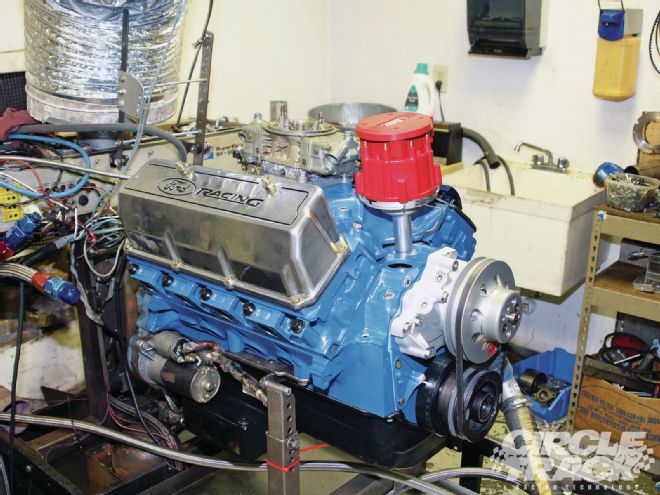
A lot of times we'll get caught up in bench racing sessions and engine builders will talk about the "good old days" when the rule books were thinner and inventive engine builders were free to practice their craft with a little imagination. And, of course, right after that the conversation almost always drifts toward how "everybody is forced to race the same thing, and there's no opportunity to try something new."
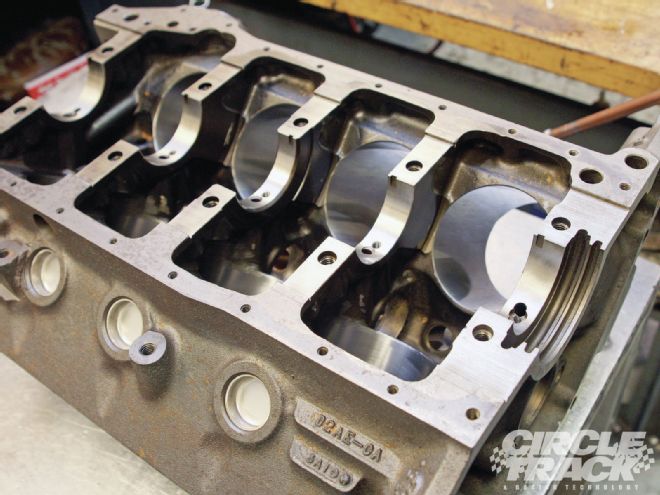 Ford’s Cleveland engine design isn’t nearly as popular as the Windsor, and we haven’t seen one in a stock car race in years. But the block was put in thousands of cars between 1969 and 1974 and you can still find components if you look around.
Ford’s Cleveland engine design isn’t nearly as popular as the Windsor, and we haven’t seen one in a stock car race in years. But the block was put in thousands of cars between 1969 and 1974 and you can still find components if you look around.
Whether that's really true or not is a topic for another story, but when we heard about this engine build, we instantly thought about all of those bench-racing sessions. It turns out that in the right situations, a smart engine builder can still get a little creative to the racer's advantage.
Take, for example, this Ford Cleveland engine build. For most car guys, the last time they thought about a Cleveland being raced was with the Boss 302 back in the heyday of Trans-Am racing. Stock car racers will be aware that the famous Yates Cup heads were, for the most part, simply heavily reworked Cleveland heads. But today, by and large, Clevelands have been relegated to old muscle cars and cruise nights.
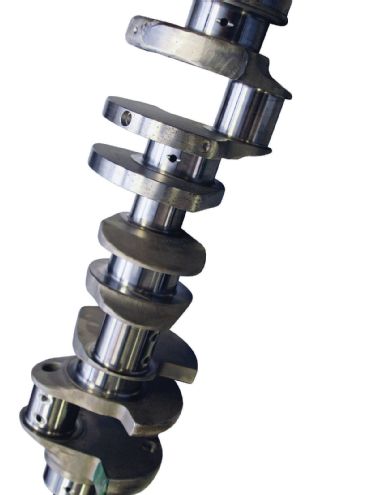 KT Engines went with a modern Windsor crank with the main journals cut down from 3.00 inches to the smaller Cleveland size of 2.750. The rod journals are also sized to fit the ubiquitous 2.100 Chevy rods.
KT Engines went with a modern Windsor crank with the main journals cut down from 3.00 inches to the smaller Cleveland size of 2.750. The rod journals are also sized to fit the ubiquitous 2.100 Chevy rods.
Frank Kimmel's Street Stock Nationals racing series is still relatively new, but it's gaining popularity quickly because it's racer-oriented, produces great races and keeps the costs down. It's also driven by a philosophy of allowing (and even encouraging) all types of makes and models on the racetrack. This is quite a contrast to most tracks where the cars in the Street Stock ranks are dominated by Chevrolet Monte Carlos and a Ford is spotted about as often as a rabbit in the dog pound.
Normally, engines in this series were limited to a maximum 410 cubic inches and a 500-cfm two-barrel carburetor. But starting with the 2011 season, a rule change now allows engines with less than 362 cubic inches to run any four-barrel carburetor. Engine builder Ken Troutman of KT Engine Development thought the opportunity to use a four-barrel carb could help produce an engine with much better throttle response. This should result in a car that's more driveable and has more torque when trying to get up off the corner. As an added benefit, the smaller motor sizes are given a 100-pound weight break.
Of course, if you're trying to achieve this with a Ford, a Windsor small-block could do the same thing. Ford's N351 cast-iron head is widely used in Late Model Stock racing, so it has good power output, is readily available and can be bought used for a good price. But the rules also require the use of a cast-iron exhaust manifold, and that simply isn't available with Ford's N heads. So instead of going with a poorer performing Ford head or giving up and going back to the standard Chevrolet (the popular option is a 400 Chevy block built to the larger spec) Troutman hit on using a Cleveland block to take advantage of the Clev's excellent cylinder heads.
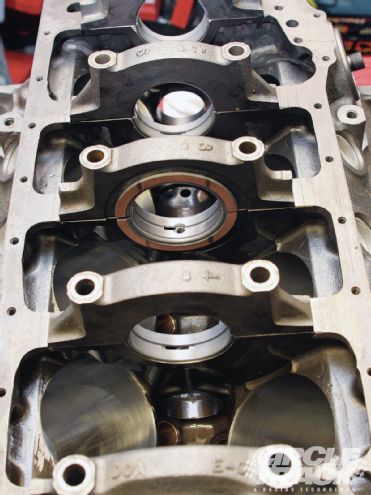 One issue with using a Windsor crank in a Cleveland block is the Windsor thrust bearing is 0.010 wider. The smaller main journal size means you can’t use a set of Windsor bearings in the Cleveland block, but Troutman got around this by using the thrust bearing for a 390 Ford. The 390 bearing has a 360 degree groove, so Troutman stuck with Cleveland bearings for the other mains because they have only a partial groove which provides more surface area.
One issue with using a Windsor crank in a Cleveland block is the Windsor thrust bearing is 0.010 wider. The smaller main journal size means you can’t use a set of Windsor bearings in the Cleveland block, but Troutman got around this by using the thrust bearing for a 390 Ford. The 390 bearing has a 360 degree groove, so Troutman stuck with Cleveland bearings for the other mains because they have only a partial groove which provides more surface area.
Not only does the Cleveland engine have the requisite cast-iron exhaust manifolds that will bolt right up, but the Cleveland head is infamous for its performance. It's one of the few stock heads with the right combination of a closed combustion chamber for an efficient burn pattern and higher compression ratios, canted valves that open toward the center of the cylinder for improved airflow, and angled spark plug holes for an efficient burn pattern.
Troutman was also able to find a pair of Austrailian 2V heads which were originally paired with a two-barrel carb. These are preferable for the smaller ports and chambers which will improve combustion and airflow. He also procured at the same time a matching—rules correct—cast-iron intake and exhaust manifolds.
So, follow along as we put together a very old race motor with some 21st century techniques. It's the new-school Cleveland.
On The Track
While working with Circle Track for this story, engine builder Ken Troutman was working under quite a deadline. He put in a few late evenings in order to finish the engine in time to completely break in and dyno the engine on a Thursday. The race team came by to pick up the engine on Friday and raced that next Saturday afternoon and evening at Concord (NC) Speedway. Although it'sn't an official Kimmel Street Stock Nationals event, Concord has adopted the entire rulebook for the Street Stock class.
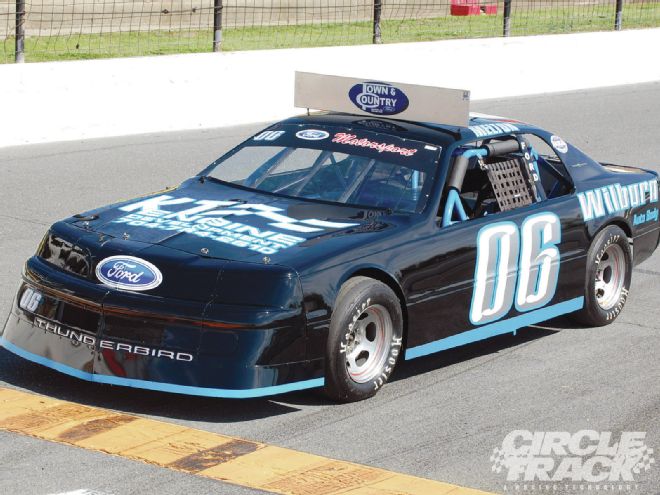
Driving a Thunderbird (pictured) powered by the new motor, driver Jeff Melton reports that this Cleveland won its very first race. And as far as we can find out, it's the first time a Ford has won an event racing under the KSSN rulebook.